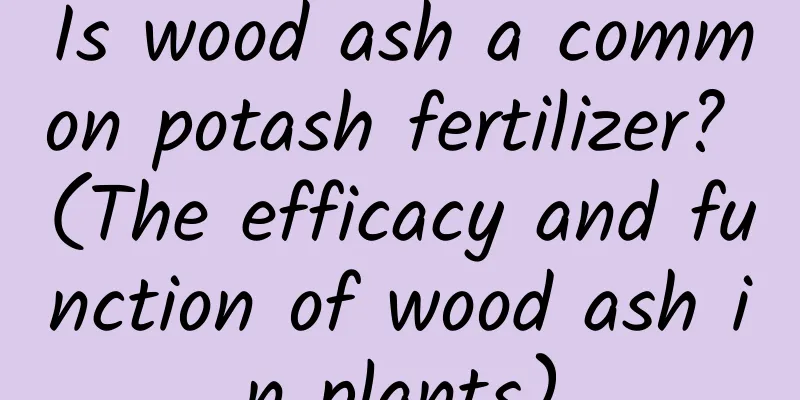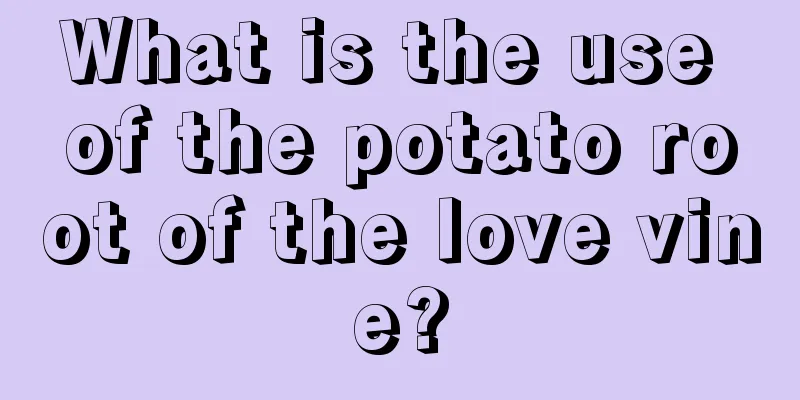Is wood ash a common potash fertilizer? (The efficacy and function of wood ash in plants)

Wood ash is a good potassium fertilizerThe potassium content in wood ash is about 5%, which is the highest among other organic fertilizers , and the water-soluble "potassium" contained in it reaches more than 80%. When making wood ash, the ash produced by high-temperature combustion will have a lower potassium content. However, the black carbonized ash produced by low-temperature smoldering has a higher potassium content. This is why we used to cover the rice straw with soil to let it smolder when we burned it in the countryside. There are many uses for plant ash1. The water-soluble potassium in wood ash can be quickly dissolved by water, and then carried into the plant body by water to quickly replenish potassium. 2. Potassium is second only to nitrogen fertilizer in the growth process of plants. It can improve the environmental adaptability of plants and enhance their disease resistance. 3. Wood ash is alkaline, and after use, it can effectively prevent the growth of acid-loving bacteria in the soil. When wood ash is first applied, pests in the soil will be suffocated, and it can also drive away pests such as snails and slugs on the surface of the soil. 4. The potassium element in wood ash is recommended to increase the fruit setting rate. Applying wood ash when the flower buds fall and the fruits are just about to bear fruit can increase the fruit setting rate and make the fruits expand quickly. What should you pay attention to when applying wood ash?1. Wood ash is an alkaline fertilizer. When applying it, be careful not to apply it together with slightly acidic fertilizers. They will react chemically with each other and transform into elements that cannot be absorbed by plants or are ineffective for absorption. 2. The water-soluble potassium in plant ash is the most common. After making it, it cannot be exposed to rain. Otherwise, a large amount of potassium will be lost. It cannot play the role of potassium supplementation when fertilizing. 3. Plant ash is mostly lignin, with very little cellulose. Lignin is rotten, so when using plant ash, it cannot be used frequently. The fine particles after rot have strong adhesion, which will cause soil compaction. 4. When applying wood ash, it is best to use a shallow burial method. After potassium is dissolved by water, it exists above the soil and is easy to volatilize. It is also easy to lose in the rain. |
Recommend
How to grow windmill jasmine
Growing area When windmill jasmine grows in the s...
Where does durian grow?
The durian fruit is the size of a football. Its p...
What is a Christmas tree and what does it symbolize?
1. What is a Christmas tree? There are many tree ...
Is it better to grow hanging plants in water or soil?
Is it better to grow spider plants in water or so...
Can Christmas cactus bloom in winter?
Regular flowering period The flowering period of ...
Cultivation methods and precautions of bird's tail flower
1. Maintenance methods 1. Soil: Bird's tail f...
Caterpillars grew in her flowerpot, but they came back to life by pinching off some branches, and the entire pot was full in one month!
What does white sandalwood look like? Some people...
Cultivation methods and precautions of the rich tree
1. Soil It is recommended to use loose, nutritiou...
How to prune Pyracantha
Pyracantha ball pruning Pyracantha is often prune...
Can kumquat be planted in the yard?
Can kumquats be grown in the yard? Kumquat can be...
How to Overwinter Monstera
Control indoor temperature Monstera can grow well...
Can I grow grape vines at home?
Can I grow grape vines at home? You can grow grap...
What are the common wild fruits in rural areas?
1. Solanum nigrum Solanum nigrum, affectionately ...
Is Clematis poisonous?
1. Is it poisonous? Clematis is not poisonous. It...
What to do if the leaves of Peach Beauty turn into water
Reason 1 for leaves turning into water: no water ...









